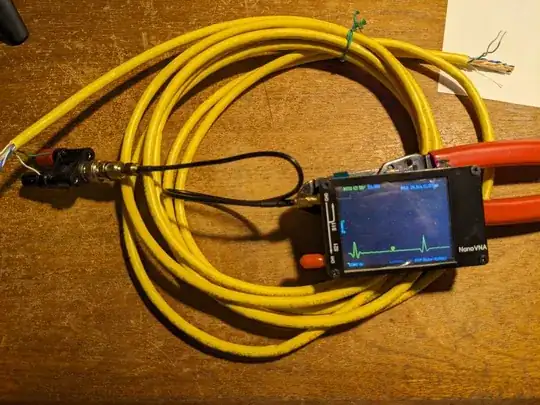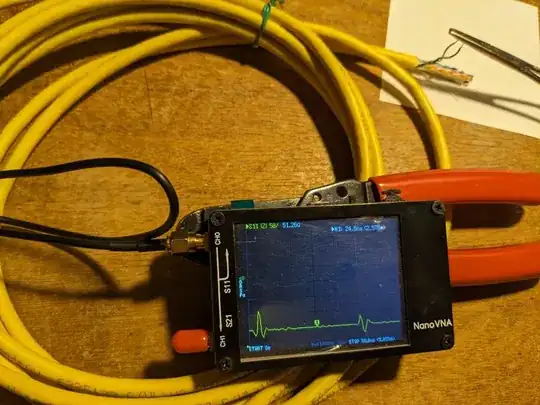Thought I'd try doing some actual experiments with twisted pair feedlines and also just some general "non-coax" measurements and testing, but not until after I understood a bit more about using my VNA. Turns out that was probably a good idea as even the basic initial measurements are not what I had expected!
I haven't tracked down any official standards (maybe this is partly where I went wrong?) but "the internet" says that the twisted pairs of network cable have a characteristic impedance of 100Ω. But when I look down a pair of wires with my NanoVNA in TDR mode, the |Z| it says it sees through the length of wire is pretty much right around 50Ω instead:

The setup here is obviously not super precise, I'm just using a BNC→banana plug adapter to clamp onto both wires of a twisted pair. The NanoVNA is set to sweep from the bottom of it's range up to 750MHz iirc seemed to match the wire, and I've got it showing |Z| with the "transform" option on.
I don't thing the results are completely bogus, as when I change the end of the pair from an open to a short the initial disturbance of the banana plug remains the same while the disturbance corresponding to the end of the line "flips" as it were:

But the reading along the whole line shows ~50 ohms instead of the 100 ohms I was expecting to see. Am I doing something wrong, or is the expected result? Is there a way to see the actual characteristic impedance along a transmission line with a VNA, or does it basically just "see" its own (i.e. the VNA's) characteristic impedance in the absense of a disturbance?